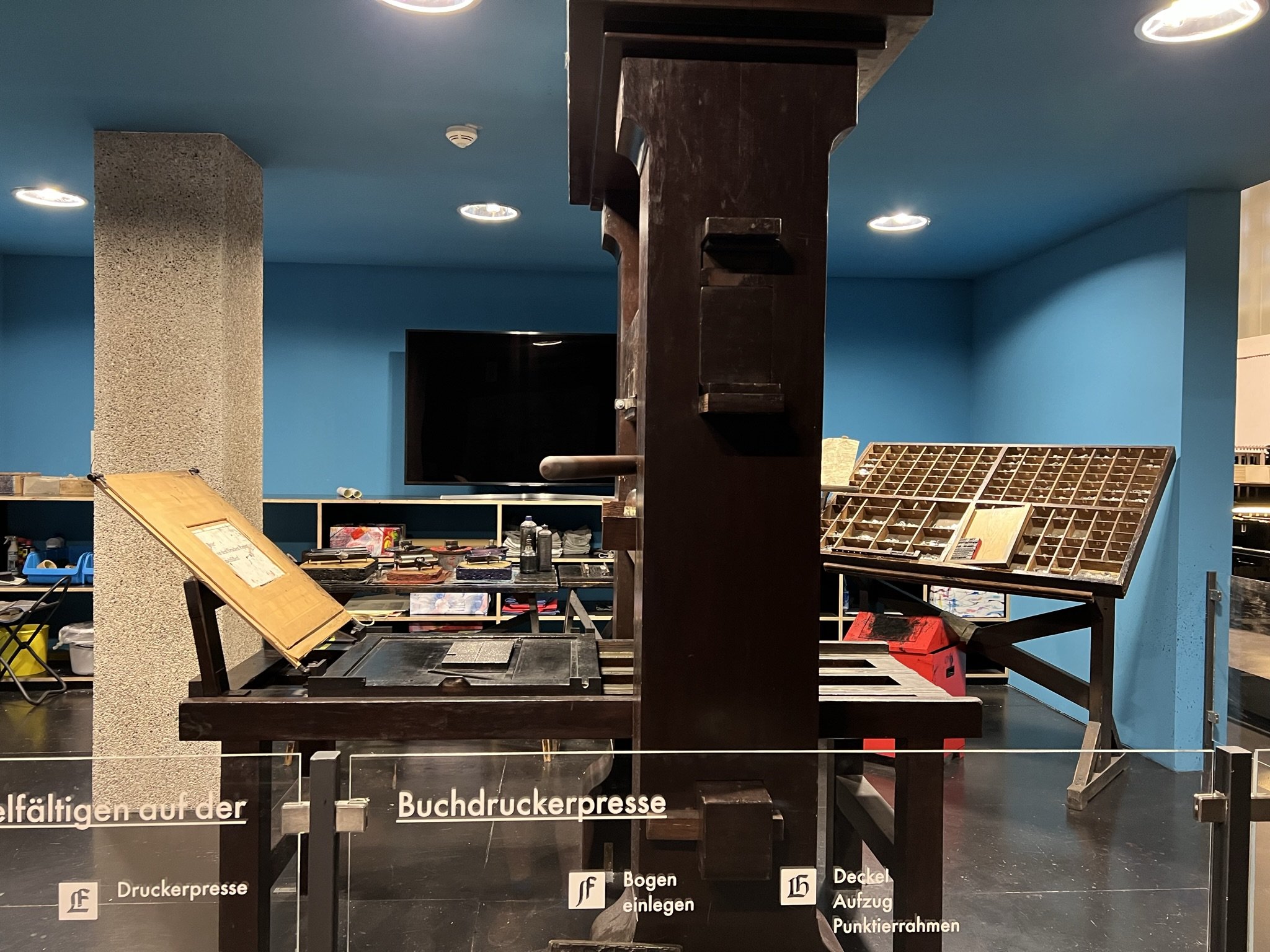The Gutenberg Museum
Visiting the most important invention of the 20th Century
When I travel, I like to visit some of the most historically significant sights. In Mainz, this meant visiting the museum for the man credited with ending the Middle Ages and who often appears as the most important inventor of the 20th century: Johannes Gutenberg. If you aren’t familiar with his invention, you are reading one of the later updates to his original creation right now. Gutenberg was the first to develop a printing press, capable of reproducing books without the meticulous hand-written process of the time.
For the first time, knowledge could be democratized and was no longer for only the elite. Texts could be printed by the hundreds or thousands, spreading information and messages wider than ever before. Gutenberg’s invention was first to change the church, most notably by Martin Luther who used it to challenge the authority of church leaders. Popes used the invention to print scripts promising the cleansing of sins in exchange for money. In other words, popes sold a ticket to a better afterlife by the thousands to finance the building of massive cathedrals and enhancing the church’s wealth.
As we all know, information doesn’t need to be accurate to spread through print. It is therefore most ironic that the only known image of Gutenberg is an inaccurate sketch made by a French artist that depicts Gutenberg with a long beard. He never would have had such a beard given his class in society. I couldn’t help but purchase postcards from the Gutenberg Museum that contain this inaccurate depiction of Gutenberg. These will soon be framed in my office.
I also found it peculiar that the Gutenberg Museum, one of the most important in the history of our history, was the least busy and least expensive of the museums I visited on this trip. At five euros for entry and an exquisite display of early printing, along with two complete Gutenberg bibles, this was by far the best deal of the trip.

